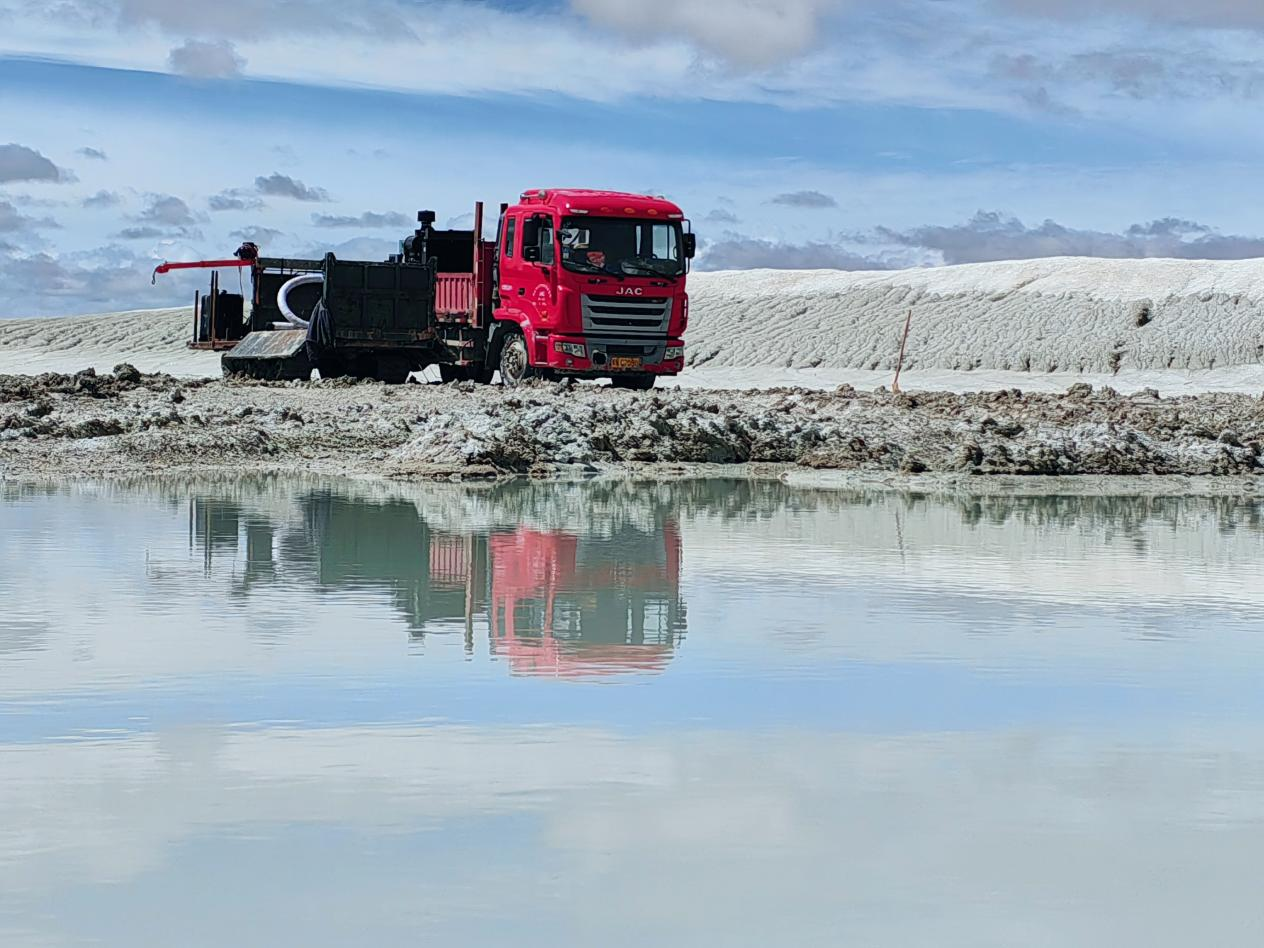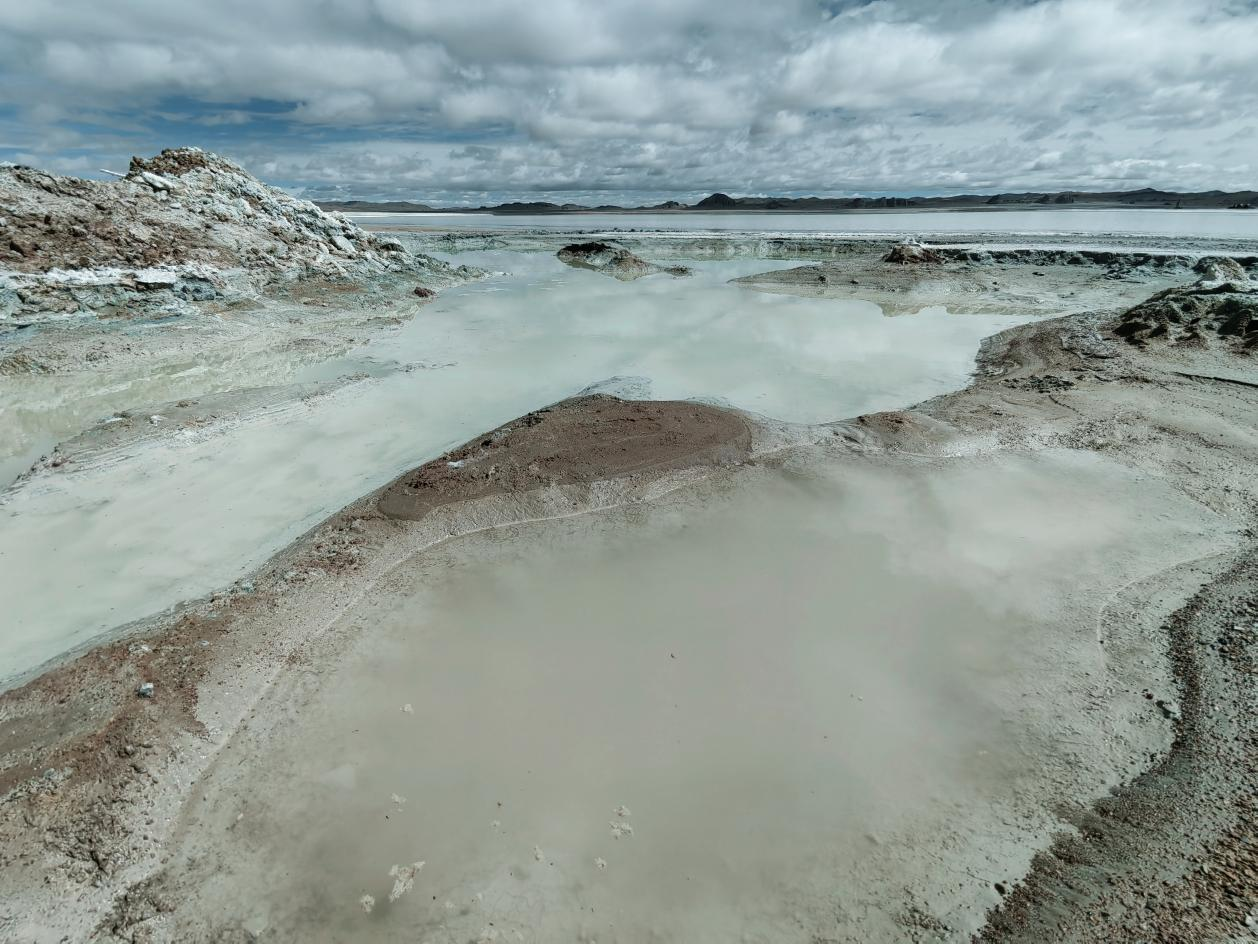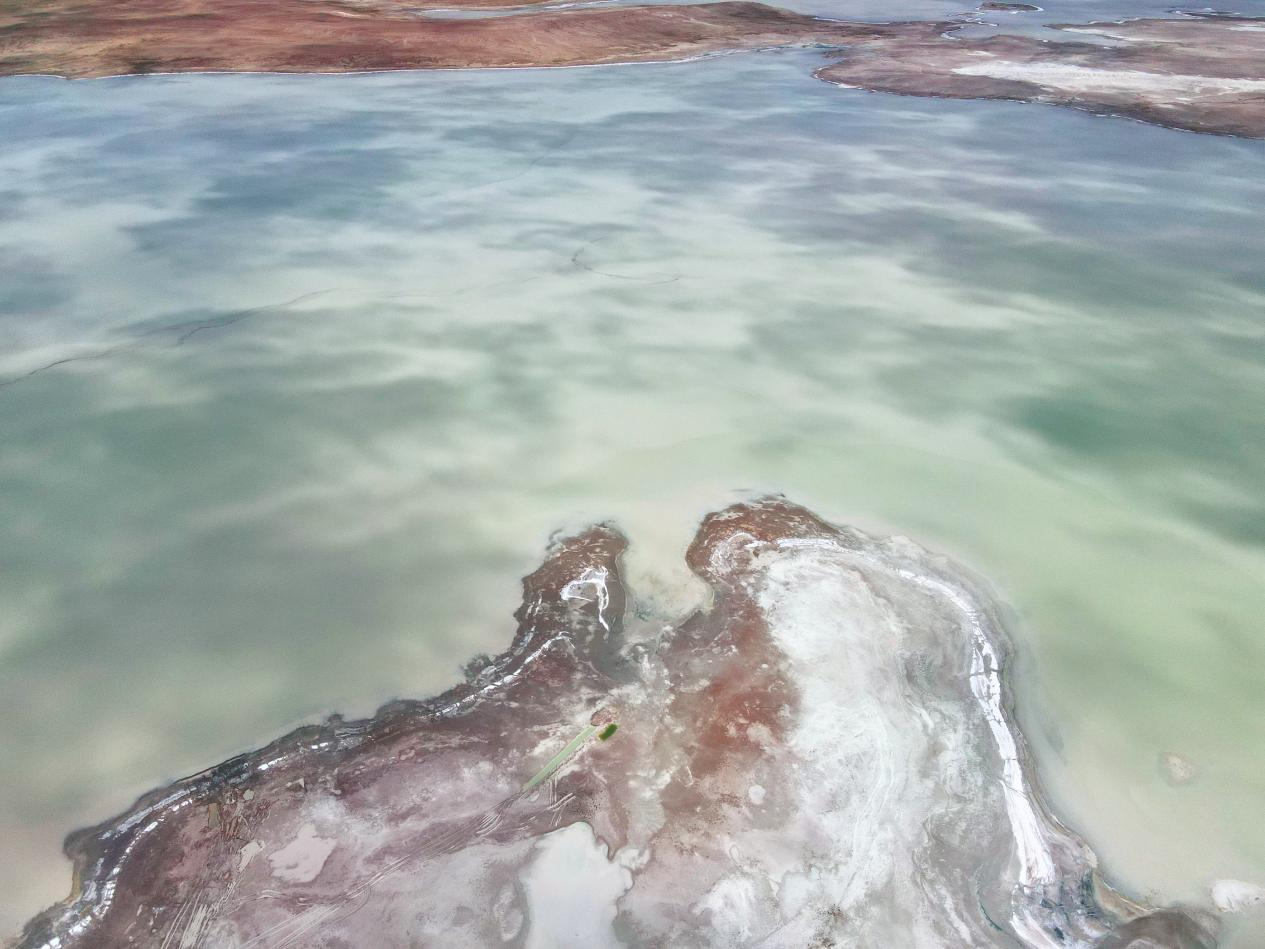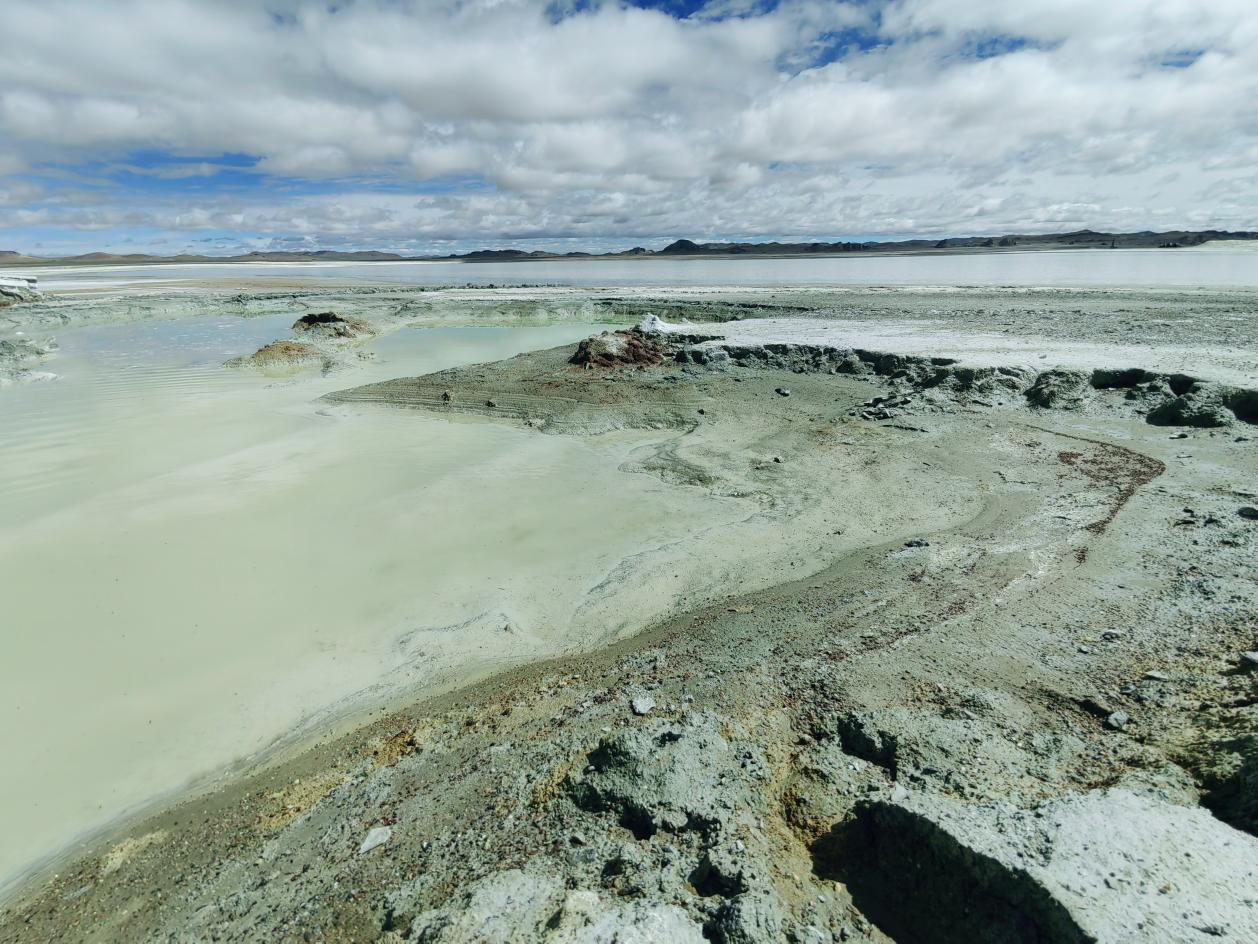

Fig 1 BANGKOG CO Brine Lithium
BANGKOG CO is a brine lithium deposit located within the Tibet Autonomous Region, boasting three interconnected sub-lakes. Sub-lakeⅠis seasonal and sits at an altitude of 4525 meters, with a maximum water storage area of 5.4 square kilometers. Sub-lake Ⅱ is also seasonal, positioned at an altitude of 4522 meters, and covers a maximum water storage area of 50 square kilometers. Finally, sub-lakeⅢ, situated at an altitude of 4520 meters, holds water all year round. BANGKOG CO is situated at 31°43′N 89°29′E, covering an area of 55.2 square kilometers.

Fig 2 BANGKOG CO Brine Lithium
Due to its location in a high-altitude region, the BANGKOG CO brine lithium deposit exhibits the following main characteristics of high-altitude areas: Decreased atmospheric pressure; lower temperatures with significant diurnal variations; reduced air density and humidity; higher solar radiation intensity, and so on.

Fig 3 BANGKOG CO Brine Lithium
High-altitude regions have an impact on the performance of the following equipment:
1. Impact on Electric Motors:
1.1. Lower atmospheric pressure and air density reduce the air insulation withstand strength of motors, leading to decreased breakdown voltage and potential corona discharge (radio interference), especially for high-voltage motors.
1.2. Increased altitude worsens motor cooling conditions, raising winding temperatures. Elevated winding temperatures increase resistance, thereby reducing motor power output.
1.3. Thinner air decreases the magnetic capability between the rotor and stator gaps, directly affecting motor power output and load-carrying capacity.
1.4. Higher solar radiation intensity can lead to increased temperature rise in outdoor-operating motors. In the presence of moisture, insulation materials and coatings may age faster, resulting in shorter lifespan.
Considerations for equipment selection: When choosing electric motors, adjustments should be made based on actual conditions, selecting high-altitude motors with improved insulation strength, electrical clearances, and temperature rise limits to meet required performance.

Fig 4 BANGKOG CO Brine Lithium
2. Impact on Electrical Equipment:
2.1. In high-altitude environments, lower air pressure and density decrease electrical clearances, making electrical equipment more susceptible to insulation breakdown. Under rated voltage, insulation materials may experience instantaneous breakdown, causing fuses to blow or even igniting plastic insulation materials, resulting in electrical safety incidents.
2.2. Large temperature differentials between day and night can cause condensation on the surface of electrical equipment, accelerating corrosion of metal enclosures or components. Low nighttime temperatures may lead to the freezing of liquids inside equipment, causing ruptures due to volume expansion. Prolonged exposure to significant temperature variations accelerates equipment aging and significantly shortens its lifespan.
2.3. Longer daylight hours and lower relative humidity in high-altitude regions decrease the dielectric constant, necessitating higher material and performance requirements for electrical equipment.
Considerations for equipment selection: Choose higher insulation classes for electrical equipment and cables, opt for high-altitude compatible equipment, and select suitable enclosure materials for high-altitude regions.

Fig 5 BANGKOG CO Brine Lithium
3. Impact on Air Compressors:
3.1. With increasing altitude, atmospheric pressure decreases, leading to thinner air. This affects air compressor performance, especially flow rates and discharge pressures.
3.2. Thinner air results in reduced air flow, decreasing cooling effectiveness. This may cause air compressors to overheat and become damaged.
3.3. Due to reduced oxygen levels, lubricating oil oxidizes faster, requiring more frequent replacement.

Fig 6 BANGKOG CO Brine Lithium
4. Based on these factors, considerations for equipment selection include:
4.1. Choose appropriate air compressor models and specifications based on site conditions to ensure compatibility with BANGKOG CO's local climate and altitude.
4.2. Increase the diameter of air intake pipes to enhance air intake and boost discharge pressure, compensating for the effects of high-altitude thin air.
4.3. Opt for high-altitude motors to ensure normal operation in BANGKOG CO's high-altitude environment.
4.4. Strengthen maintenance of air cooling systems and regularly replace lubricating oil to effectively cool and lubricate the equipment.

Fig 7 BANGKOG CO Brine Lithium
Optimization of the project by HOT's services:
Through intelligent control of the layout, HOT helps optimize product quality and recovery rate for BANGKOG CO projects while minimizing deployment and operating costs, particularly optimizing the utilization of freshwater, mining materials, and equipment resources. By implementing intelligent control and predictive maintenance, HOT optimizes equipment layout and maintenance, reducing the impact of high-altitude regions on production equipment at the BANGKOG CO brine lithium project. Additionally, it assists clients in avoiding overspending, increasing output, thereby reducing capital expenditure (CAPEX) and operating expenditure (OPEX).